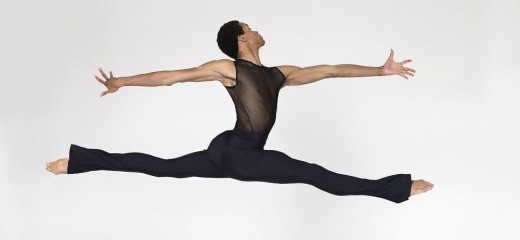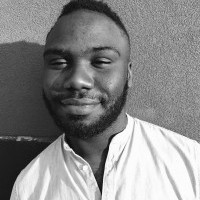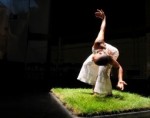
Healing and Liberation at the Kimmel Center: Philadanco's Success Stories
by Mohan Bell
A clear theme emerges in Philadanco’s new program Success Stories: liberation, spirituality and prophesy. The audience bears witness to a narrative of bondage to freedom, especially within the context of black bodies. The Kimmel Center’s resident company premiered its powerful program to highlight the works of past dancers who have moved on to be choreographers in their own right. The company has been a launching pad for some of our great contemporary voices, who have gone on to work in academia, working residencies with Alvin Ailey, and serving as choreographer for pop stars.
The curtain rises to The Order with a red stage and rhythmic, pulsing music that prepares us for a mythological and spiritual experience . All this from the mind of choreographer Iquail Shaheed. A group of dancers are organized in a circle. They are following the instructions of, what is perceived to be a representation of the concept of “man”, a male dancer who walks around inside the circle, magisterially. Outside the circle, stage left, a woman lies on the ground like a rug. The man models and teaches his followers to move in time and how to degrade the woman’s body. He walks over her, his skirt dragging with no care, sits on her back as she tries to crawl away, and makes her his footstool, pressing his heel down on her head. The male dancers do the same thing to other female dancers at different points in the piece, but the main tension is found in the woman’s attempts to find freedom over the abuse that is placed onto her body. She, in the end, makes the man her footstool.
Anthony Burrell’s world premiere of Endangered Species stands out as the most powerful piece. The segment begins with a line of men, all dressed in prison jumpsuits. The names of different black men who have become martyrs are emblazoned on their backs (Trayvon Martin, Emmett Till, Philando Castile, etc). It opens with a mixture of African and hip hop dancing, the men moving with strength. They are all eventually shot down, their bodies laid out on the stage. But the story does not end there. The men get up. They begin to move gracefully, with fluidity, beauty, and emotional heartbreak that is not usually ascribed to black men. They are mourning, leaning on each other for support. Black men’s grief and the bonds they share are stories not usually explored. One dancer discovers freedom for himself—symbolized by zipping down his jumpsuit, letting the top hang freely— and inspires the others to join him. In a scene that resembles Aaron Douglas’s painting “The Negro in an African Setting,” the men begin a new dance, a mixture of African and hip hop again. But it is quite different from the opening routine. They are free warriors, their bodies and minds liberated. They do not strip off the jumpsuits and the orange beanie hats that they wear. They turn them into something new.
The image of spiritual awakening and liberation is continued in Hope Boykin’s Testimony: Evidence Given By A Witness (For Talley). Set during a prayer meeting, women suffer together and support each other as each deals with the pain she has brought to the service. Are they mourning a wayward child? A recalcitrant husband? The feeling of weariness that comes from their day-to-day experience? Each woman has a place and an authority as they support each other through the suffering. When one finishes her moment, she becomes the support for the next one who needs to be held up. But freedom and liberation are the expected outcomes of this experience for these women as they set themselves free. Afterwards, they go back and sit on the bench and resume the still positions they had in the opening. Does that mean that the freedom is temporary, until the next Wednesday service?
Tommie-Waheed Evans also attempts to highlight this spiritual connection to freedom in his world premiere piece, With(In)Verse. With strong athleticism and well-planned group and solo routines, the dancers move with abandon exploring what I interpreted as a reinvention of gospel and the future of black spirituality. At times I wondered if the countdown I heard was coming from the dancers on stage or from the people in the crowd. However, after three clear, narrative pieces, a stronger ending would have felt more balanced. This piece would have served better as an opener.
Philadanco is turning 50 in 2020. This presentation, which celebrated the works of past Philadanco dancers who are now finding much success in the world of dance, proved that we need this company even more now. Joan Myers Brown’s vision of creating a space for black dancers, and their stories, has been realized and is as current and necessary as the day it was conceived.
Success Stories, Philadanco @ The Kimmel Center’s Pearleman Theater, April 13- April 15, 2018.
By Mohan Bell
April 25, 2018









